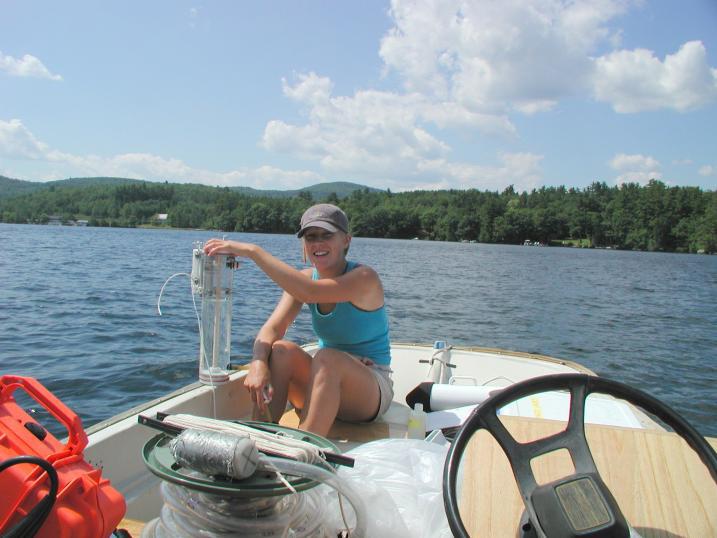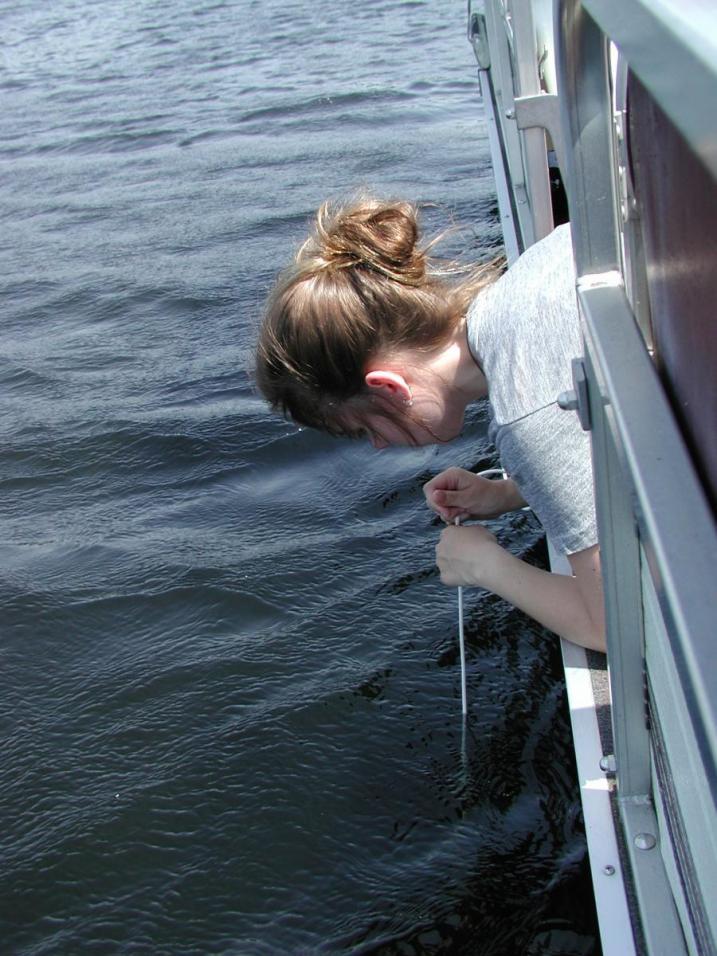Lake Monitors Help Ensure Healthy Lakes

A UNH class project on Lake Chocorua in 1978 launched one of the most successful and long-lasting volunteer environmental monitoring programs in the country: the NH Lakes Lay Monitoring Program (LLMP). Every summer hundreds of lake monitors collect water samples from lakes across New Hampshire, helping to ensure our lakes are healthy.
Since the beginning, more than 1200 volunteers have been trained by the LLMP, which is directed by UNH Cooperative Extension and the UNH Center for Freshwater Biology. This successful citizen science program has been recognized with several national awards and served as a model for dozens of programs across the U.S. and globally. Most importantly, lake monitors love their lakes and helping to keep them pristine.
Paul Richardson, a volunteer on Lake Winnipesaukee, has motored out to the same deep open water site for the past 10 years to collect water quality data. In an interview last summer with UNH’s Jim Graham, Richardson said, “We all love this lake and how clean it is, and I just want to do whatever I can to keep it that way. So this is a great way for me to get involved and give back to everyone on the lake, and to UNH.”
Lake monitors collect water samples several times a month during the summer, and some volunteers are on their lake weekly from ice-out to early fall. They have a tool kit and rigorous protocol on sampling water quality that starts with a Secchi disk and viewing scope for measuring water clarity. The black and white disk is lowered down into the water column until it disappears from site. The farther down it remains visible, the clearer the water. Lake monitors also measure water temperature, alkalinity, chlorophyll, and color with some sophisticated equipment. A water sample is also collected and sent to UNH for more detailed water quality analysis.
Most lake monitors are members of a local lake, watershed camp or road association. Others are active in their community. These groups help sustain the LLMP program by coordinating local monitors and by covering the cost of the sampling tool kits and water analysis. This partnership of volunteers, communities, lake groups, students, and scientists results in large quantities of reliable data gathered in a cost-effective way. The findings can then be used to make sound local, state and regional management decisions.
Lake monitors help to engage and inform their community about water quality, land use, and lake protection. And they are making a difference. Lake Chocorua—the lake that launched the program—is a great example. Water quality data collected by volunteers was showing a degraded lake and a major source was tracked to Route 16 that runs along the east side of the lake. As a result, local, state and federal partners worked together to install berms and swales along Route 16, resulting in a major reduction in runoff into the lake and improved water quality.
LLMP Coordinator, Bob Craycraft, noted another success story. A monitor on Lake Winnipesaukee near Long Island approached a landscaper for a condo development in an area of the lake with high phosphorus levels. The lake monitor suggested that maybe less fertilizer could be applied to the lawn. The landscaper agreed and in subsequent water quality sampling the phosphorus levels declined.
New Hampshire has more than 800 lakes so more lake monitors are always welcome. To volunteer for the LLMP you just need to commit to being able to sample your local waters throughout the summer season weekly or every other week. If interested, contact Bob Craycraft (bob.craycraft@unh.edu) to find out if your lake is currently monitored and how you can get involved.
Craycraft says, “Lake monitors are driven by their interest to protect the environment and say they don’t get out on their lake as much as they’d like. The LLMP gets them out on the water all summer, which they appreciate.”




